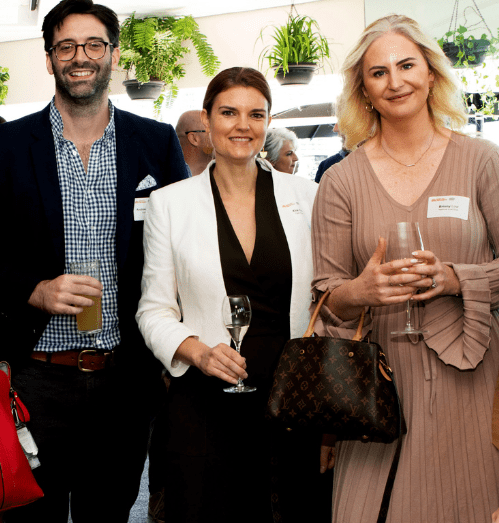
Briony is currently studying her Masters of Business Administration (MBA) whilst working full-time as a Human Resources professional. We sat down with Briony to talk about her approach to Human Resource management and her MBA experience to date.
You were recently appointed Head of People and Culture at National Trust of Australia (Queensland). Can you tell us about the organisation and the role you will play in achieving its mission?
National Trust of Australia Queensland’s (NTAQ) mission is to conserve and advance our natural and cultural heritage for future generations. NTAQ has over 24,000 members and a portfolio of 15 unique properties across Queensland from the Currumbin Wildlife Sanctuary in the south-east to the Cooktown Museum in the far north.
As the Head of People and Culture, I lead the People and Culture Team, and the Safety and Wellness Team. We design and deliver strategies to attract and align our people to our mission and values. We also develop a strong workplace culture and performance.
How has Human Resources (HR) evolved during your professional career? What will it look like in the future?
So much! In my role as an Australian HR Institute Convenor, we often discuss the evolution of HR. How it was perceived as a reactive and administrative function, to now, where HR is seen as your strategic business partner. HR Leaders drive organisational performance, engagement and culture that can be distilled through both the balance sheet and in the boardroom.
As technology continues to shift all our roles, including that of HR, it has been far less about managing personnel and transactional tasks. We are now focusing on large scale strategies to minimise risk, and to attract and retain talent and future-proof our workforces.
What’s the biggest misconception about working in Human Resources (HR)?
The biggest misconception is that HR is only about onboarding and offboarding….and nothing in between. In my opinion, good HR leaders are business and commercially minded individuals who learn about the business, roles, and organisational performance, and individuals who create strategies that align to moving the organisation forward.
2022 was a year of increased job mobility. In your opinion, what strategies should employers implement to retain their employees?
Yes! We saw a lot of changes in this space in 2022. With the increase of digital nomads, people are entering the workforce or organisations with a welcome box and then they head straight to their home offices. This has resulted in organisations and industries who were traditionally opposed to remote working having to be far more flexible.
I believe employers need to ensure there is equity in their remote work policies as well as balance. The hybrid model, where employees work both remotely and in the office is a way to create that balance. It’s the best of both worlds as it encourages role modelling with senior leaders and collaboration between colleagues, whilst providing employees with their productive bursts at home.
What is one thing you wish you knew before starting your MBA?
Don’t start a new job at the same time! It is a large time commitment, and you need to ensure you carve out enough time to progress your studies. As a result, having a good support network including a supportive employer is the key to your success.
I would also suggest getting a depth of work experience before pursuing an MBA as your lived experiences can be applied throughout the program for a valuable learning experience.
Which UN Sustainable Development Goal (SDG) are you most passionate about and why?
I am most passionate about Goal 10, which is “reduce inequality within and among countries”.
The reason being, Australia is seeing the income gap widen and I believe organisations do have a responsibility to implement policies to support equality of opportunity, treatment, and outcomes for their employees. I am passionate about the sustainability of job roles and access to pathways that work to close the gap and ensuring that both Australia’s policy makers and corporates are creating policies to tackle inequality.
How would you describe the Griffith MBA Community? And what does it mean to you?
Discovering a strong Griffith MBA Community has been an added bonus, and it's given me an opportunity to network with current and past MBA students. Other than walking away with my degree, I will also come away with some great connections and friendships which was really unexpected.
If you have a question for MBA student, Briony Low we encourage you to connect on LinkedIn.
You may also like

Meet MBA Student, Naomi Saines
Naomi is a communications and marketing specialist who is striving to make a positive impact within the realms of sustainability and social impact. In this interview, Naomi talks about her most memorable project, Artificial Intelligence (AI) Marketing and what has surprised her most about her MBA studies.

Meet MBA Alumnus, Andrej Maletic
Since graduating, Andrej has created a values-driven venture known as Goraw desserts. Read what Andrej has to say about his entrepreneurial journey and what led him to pursue an MBA.

Meet MBA Student, Briony Low
Briony is a Human Resources professional who has worked with several organisations in the retail, government and hospitality sectors. In this interview, Briony talks about the evolution of Human Resources and shares advice for future MBA students.